Job Reports
The Command Center provides a Job Report for every job, enabling you to review and understand how the devices performed in a given job. This is, for example, useful in planning future jobs, as well as the following:
- May lead to uncovering side issues with devices that could not download the Over-the-Air (OTA) update.
- May result in creating a new job for the devices that did not receive the update.
You can extrapolate this type of information using the Job Report tab. On this tab, you can accomplish the following:
- View the operational performance of a specific device or all devices in the job.
- Remove devices queued to receive the OTA update from the job.
- Retry to download the OTA update to devices that failed to complete the last update.
This section of the Command Center features guide describes the Job Report tab and how to best use it to obtain valuable and actionable information.
The Job Report Tab
When a job ends whether it completed per the job schedule, was cancelled, or was manually stopped, the Ayla Platform generates a job report for all of the target devices in the job. The Job Report tab is then added for the given job along with its other tabs of pertinent information (i.e., configurations, status, schedule, etc.). This tab is not shown prior to the end of the job. Refer to the following example:
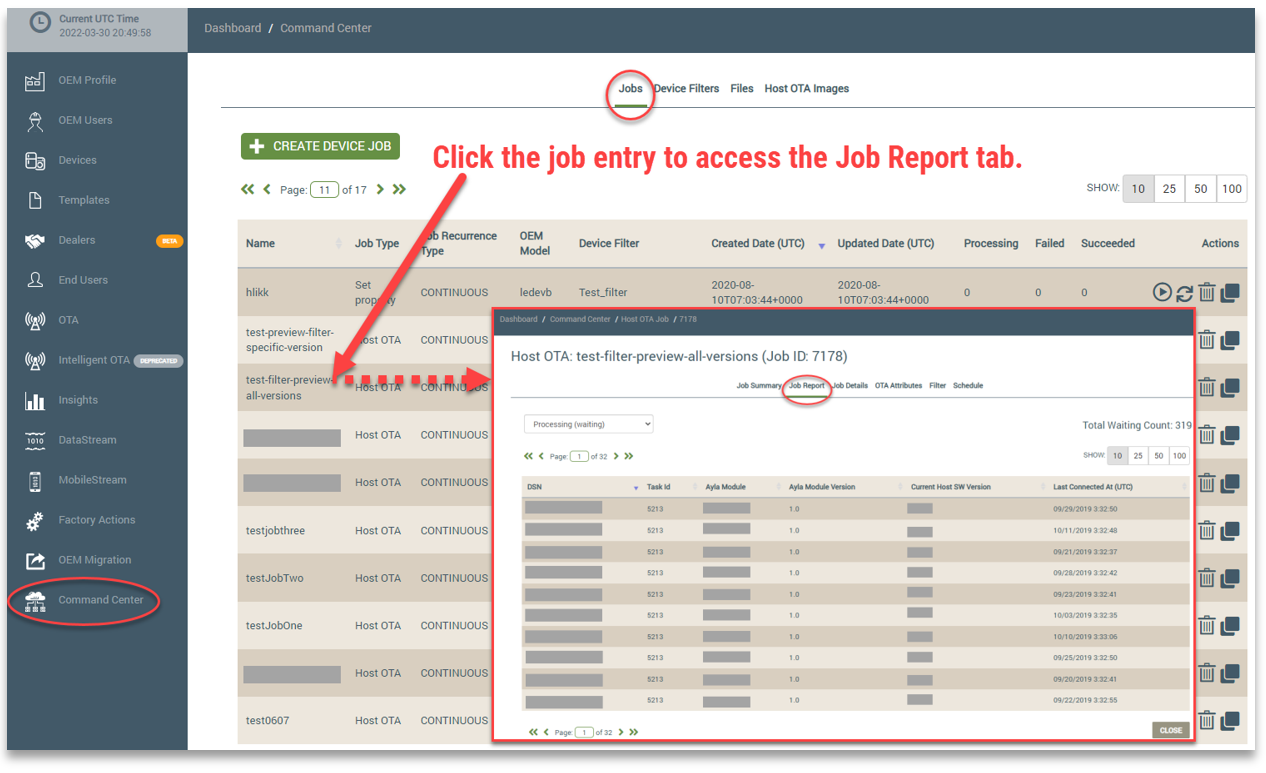
Every time a job is processed (which is considered a task), a unique Task IDis assigned to the job. Therefore, if the same job is processed twice, there are two different Task IDs associated with that job. This enables you to keep track of device details based on a particular execution of the job. Task IDs are generated in increasing order. In the table listing on the Job Report tab, all devices affected by a task (whether the OTA update succeeded or failed) show the assigned Task ID. You can sort the Task ID column in ascending or descending order. Refer to the following example:
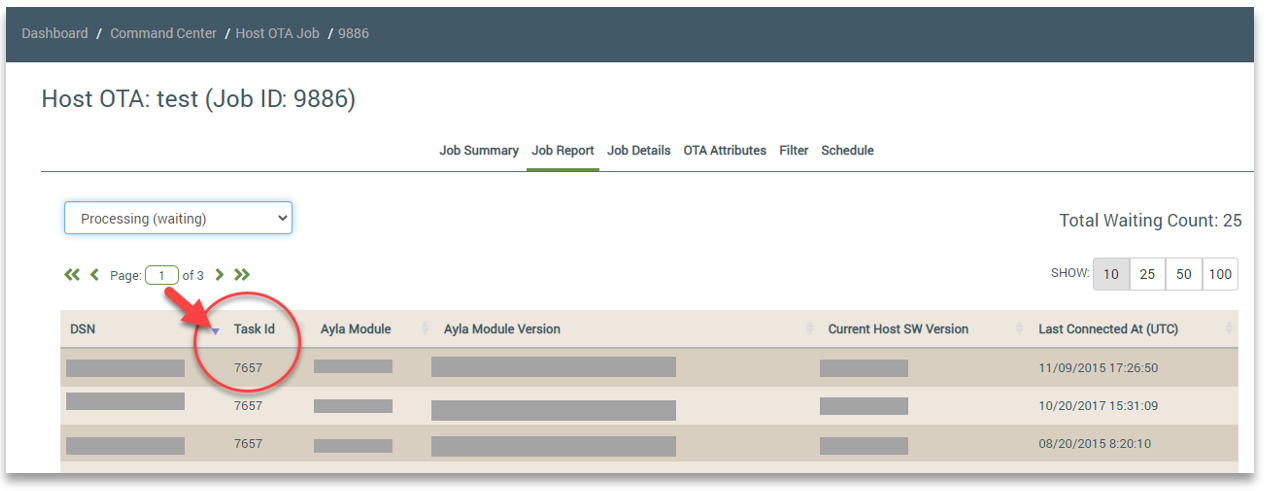
Along with the Task ID, the following information is provided for each device:
- Ayla Module - the model of the Ayla module on the device, which received the OTA update for this job. Specifying the Ayla module is important because the module may have been changed over the lifecycle of a device.
- Ayla Module Version - the version of the Ayla module on the device, which received the OTA update for this job.
- Current Host SW Version - the current software version of the host firmware on the device being upgraded in the job.
The last column in the table listing on the Job Report tab changes based on the selected operational status. This is explained in Viewing Device Performance.
Using the Job Report Tab
As stated, you can use the Job Report tab accomplish the following:
- View the operational performance of a specific device or all devices in the job.
- Remove devices queued to receive the OTA update from the job.
- Retry to download the OTA update to devices that failed to complete the last update.
Viewing Device Performance
You can view device details based on its performance status during the job. To do this, you select the status in the drop-down list on the left side of the Job Report tab above the table listing. When you select the status, the Job Report tab shows:
- The total number of devices that have this status, which is displayed on the right side above the table listing.
- Only the devices with this status in the table listing.
- Pertinent information for the selected status in the last column in the table listing (to the far right). (Therefore, this column is different for each status.)
Refer to the following example:
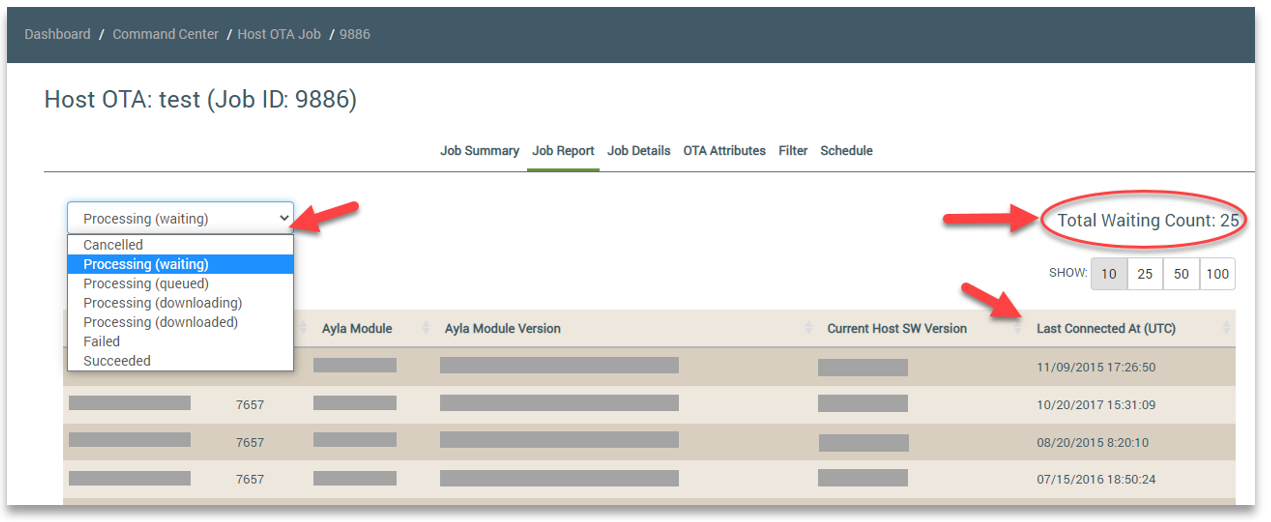
Following defines each status and describes the information for the device(s) with that status that displays on the Job Report tab.
The Cancelled Status
The "Cancelled" status shows the devices that could not be considered for the job. Notice that the last column changes to show the date and time of the last time the device was connected.
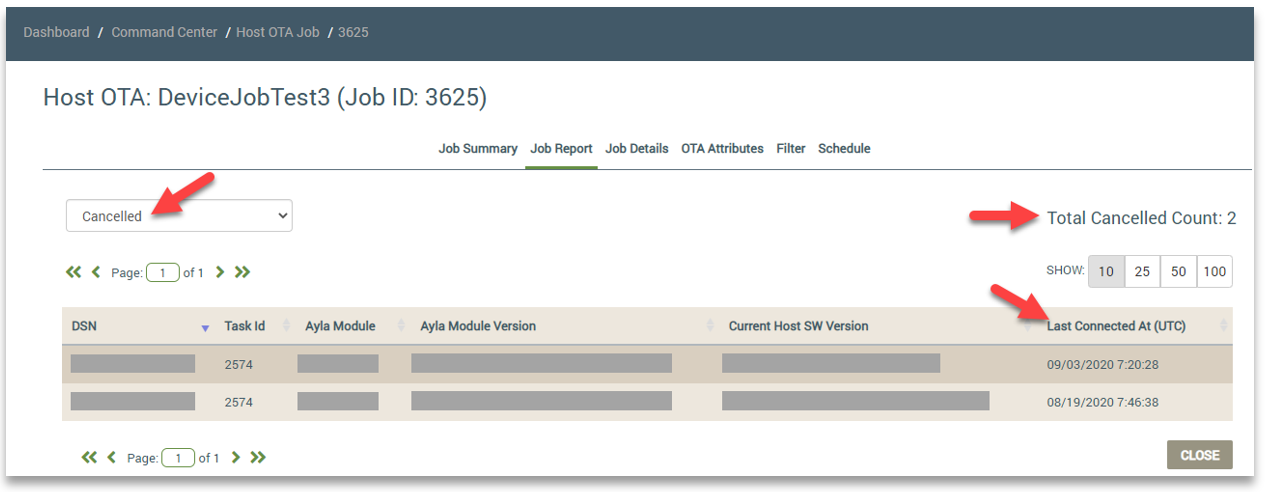
The Processing Status
This status generally means that the OTA command is in the process of being queued or downloading. For Set Property and File Transfer jobs, the Job Status report only provides a "Processing" status. However, the for Host OTA jobs, this status is broken down into the following stages:
- Processing (Waiting) - this means that the device(s) were waiting for the OTA command to be queued. Notice in the following example that the last column shows the last date and time that the device was connected when this status is selected. The Set Property and File Transfer jobs also show this column when the status selected is "Processing."
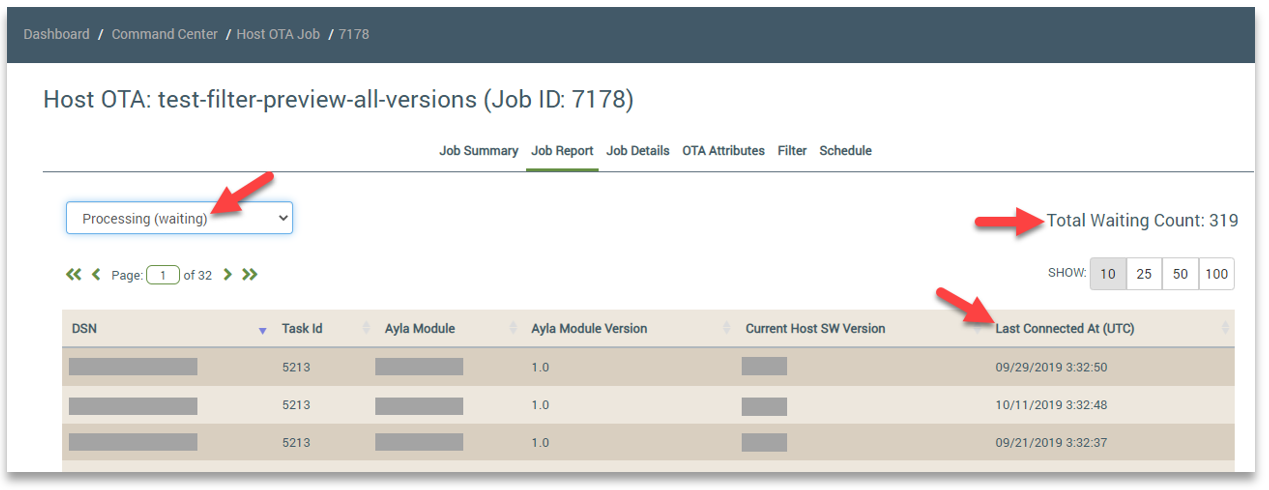
- Processing (Queued) - this means that the OTA command was issued for the device(s), but not processed. Notice in the following example that the last column shows the date and time that the OTA command was issued for the device when this status is selected.
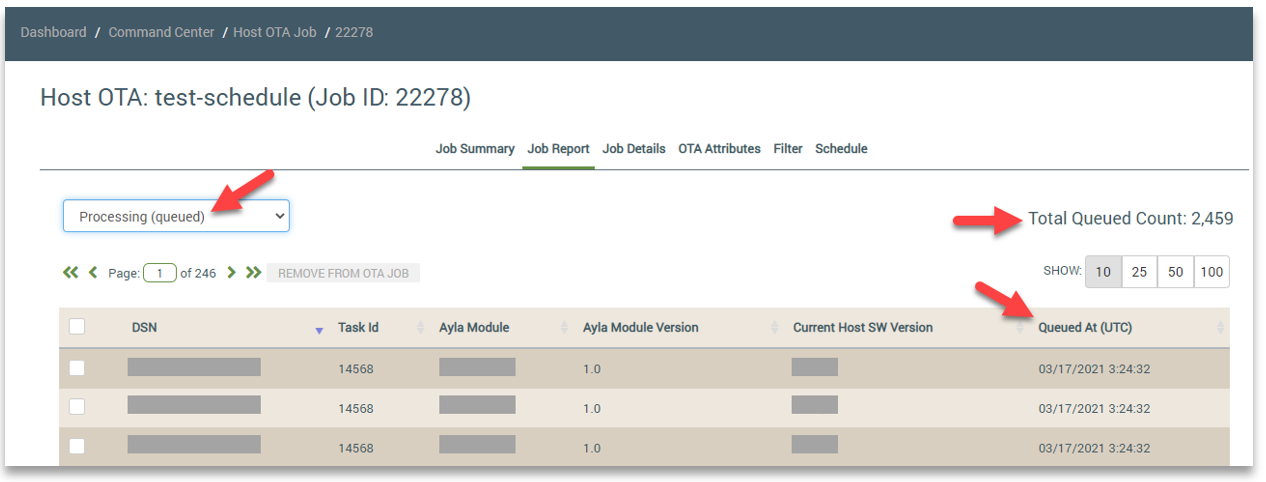
- Processing (Downloading) - this means that the image download for the target devices is in progress.
- Processing (Downloaded) - this means the image download for the target devices has completed. Notice in the following example that when this status is selected, the last column shows the current Host software version on the device. This is the same for the Processing (Downloading) status.
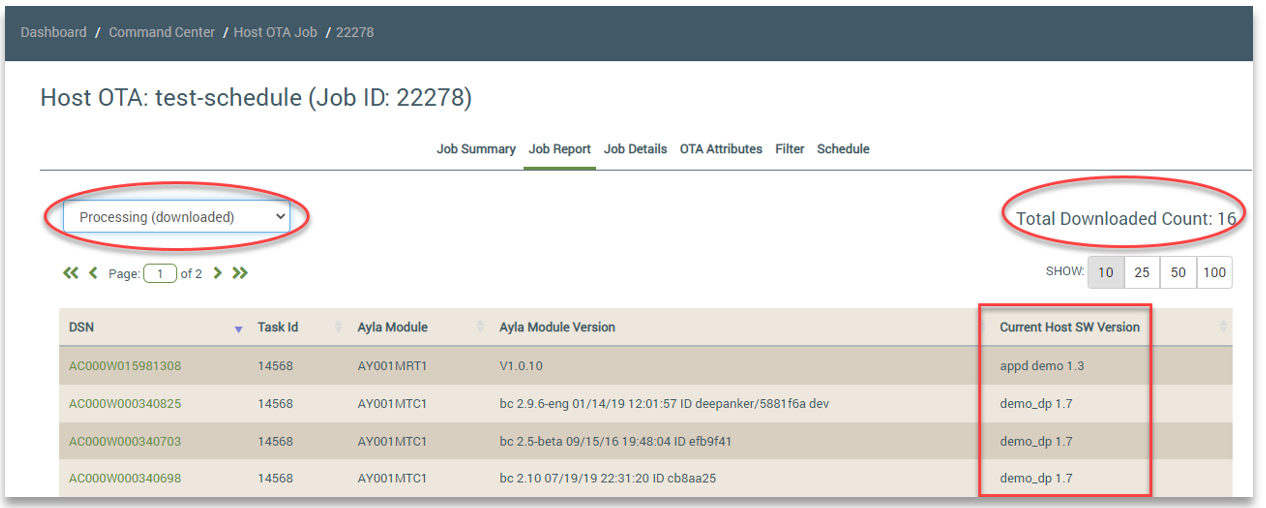
The Failed Status
This status shows the devices for which the OTA update failed. Notice in the following example that when this status is selected, the last column provides a reason for the failure.
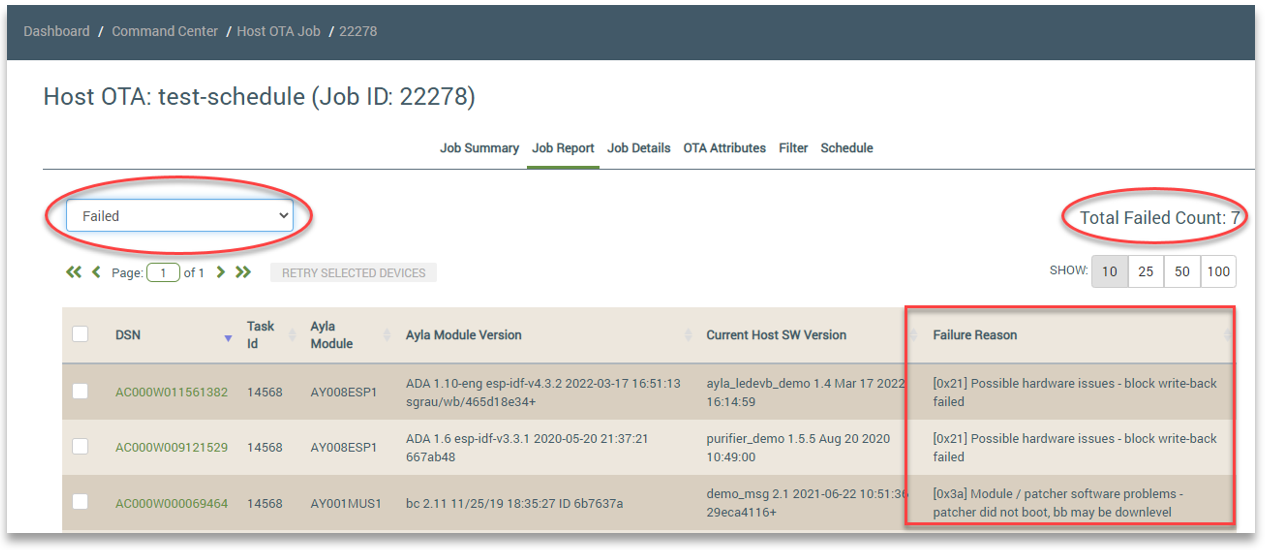
The Succeeded Status
This means that the device was successfully updated. Notice in the following example that when this status is selected, the last column shows the date and time that the device received the OTA update.

Removing Devices from the Job
For Host OTA jobs, you can remove devices from the job if they have the "Processing (Queued)" status, meaning that the OTA command was issued for the devices, but not processed. To do this: (Refer also to the example below.)
- In the table listing, select the checkbox(es) next to the device(s) you wish to delete from the job.
- Click the REMOVE FROM OTA JOB button.
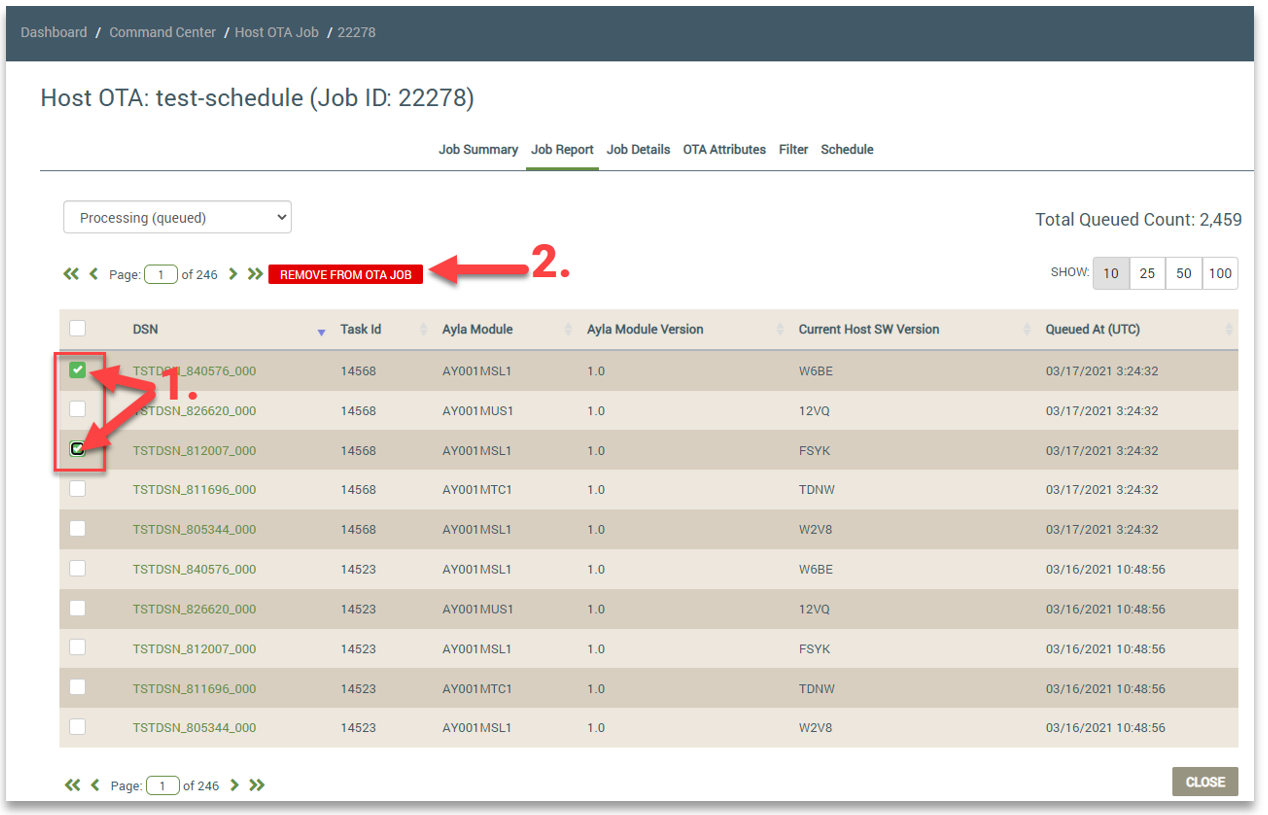
A banner displays across the top of the tab to inform you that the device(s) were successfully removed from the job, as shown in the following example:
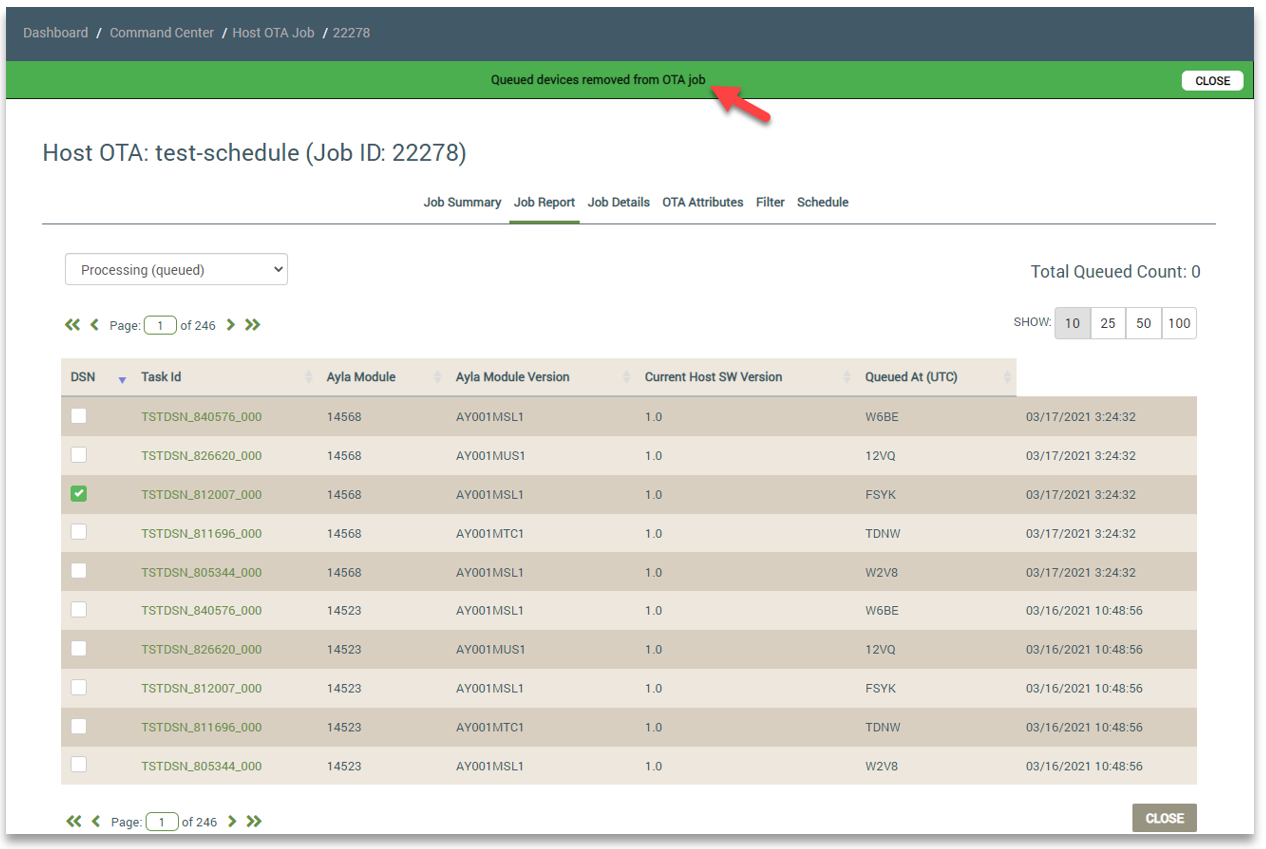
Retrying Devices that Failed
For Host OTA jobs, you can try to process the OTA update for devices that failed during the job. To do this: (Also refer to the example below.)
- In the table listing, select the checkbox(es) next to the device(s) that should receive the OTA update again.
- Click the RETRY SELECTED DEVICES button.

Updated 7 months ago
